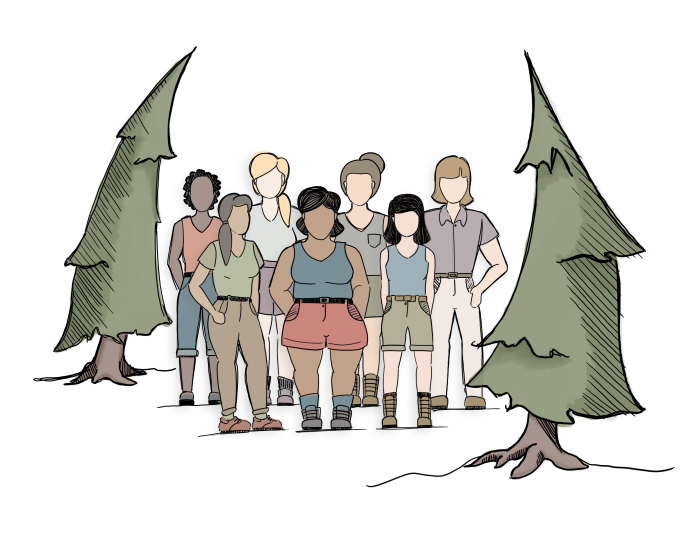by: Laura Lenhart
It is no secret that men and women are different, both in physical and mental needs; because of this, many industries produce products designed for both men and women. That is true in the outdoor equipment industry as well. The question is, what are the factors to consider in differentiating sex in product design? What if the consumer does not conform to the idea of a specific gender or a person does not have a standard body shape? For individuals in this situation, it leaves them with gear that does not perform as well as it would if right-sized. Don’t give up hope; many companies are working to remedy this, moving away from their “shrink it and pink it” mentality of the past and considering fit, function, and aesthetics.
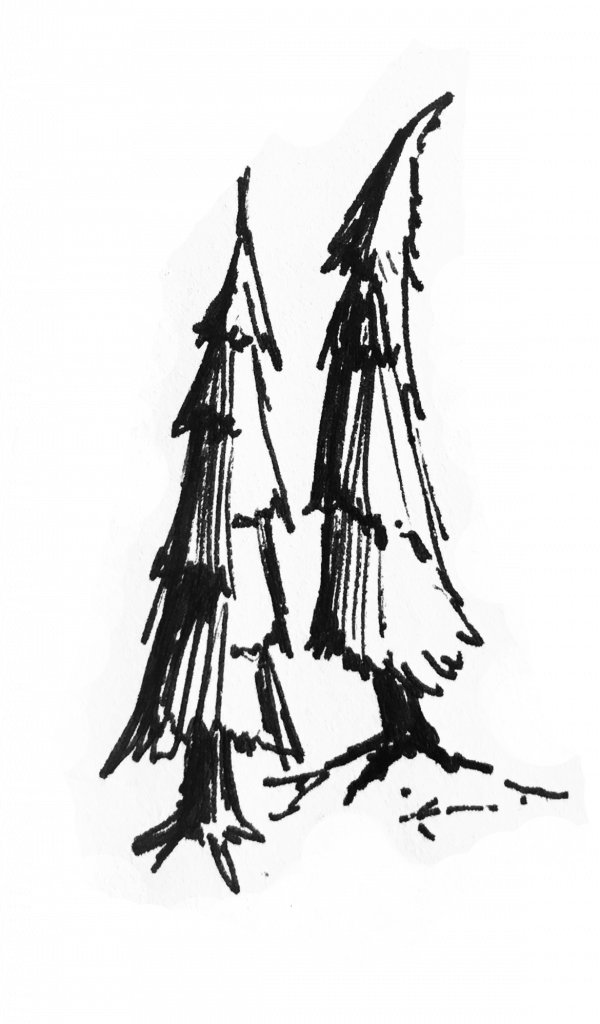
Why should individuals get outside in the first place? There are many benefits to spending time outdoors and connecting with nature. Studies have shown that individuals who go outside report improvement of mental, emotional, and spiritual health as well as decreased levels of depression and stress (Avery, 9). Outdoor activity is good for everyone, not only men. A recent statistic shows that women and men participate in outdoor activities at almost equal levels with, women making up 46% of participants and men 54% (2018 Outdoor Participation Report). The question still stands why it is important to have gendered equipment, and what does it mean to “shrink it and pink it”?
“Shrink it and Pink it” is a design industry phrase describing when companies take a product designed for men and make it smaller and add “feminine colors.” Developing for women means more than changing colors to teal and purple. It means understanding how their bodies differ from not only men but each other. Women come in a plethora of different shapes and sizes. Because of shape and size differentiation designing anything is more difficult, especially when everything needs to be performing optimally, this is one reason women’s clothing come in four different fits, petite, standard, long, and plus. However, many stores do not carry all the options for a diverse population. It was not until 2016 that REI, a national outfitter, started selling extended sizing, and even then it was only the addition of “XL” in limited stores. Today they offer sizes in all four fits but only in 21 of their 154 stores. The company cites the scaling of production as the barrier to having the products in a more significant number of stores. (Aer Parris) As an outdoor adventure products company, the need for right-sized products extends beyond the clothing that women need to fit their bodies correctly. Additional products include backpacks, boots, sleeping bags and sleeping pads, trekking poles, and climbing harnesses, to name a few things. One specific product, backpacks, is a great place to look at the advantages of gendered gear. The science of anthropometrics (the study of the size and proportions of the human body) is an excellent place to start.
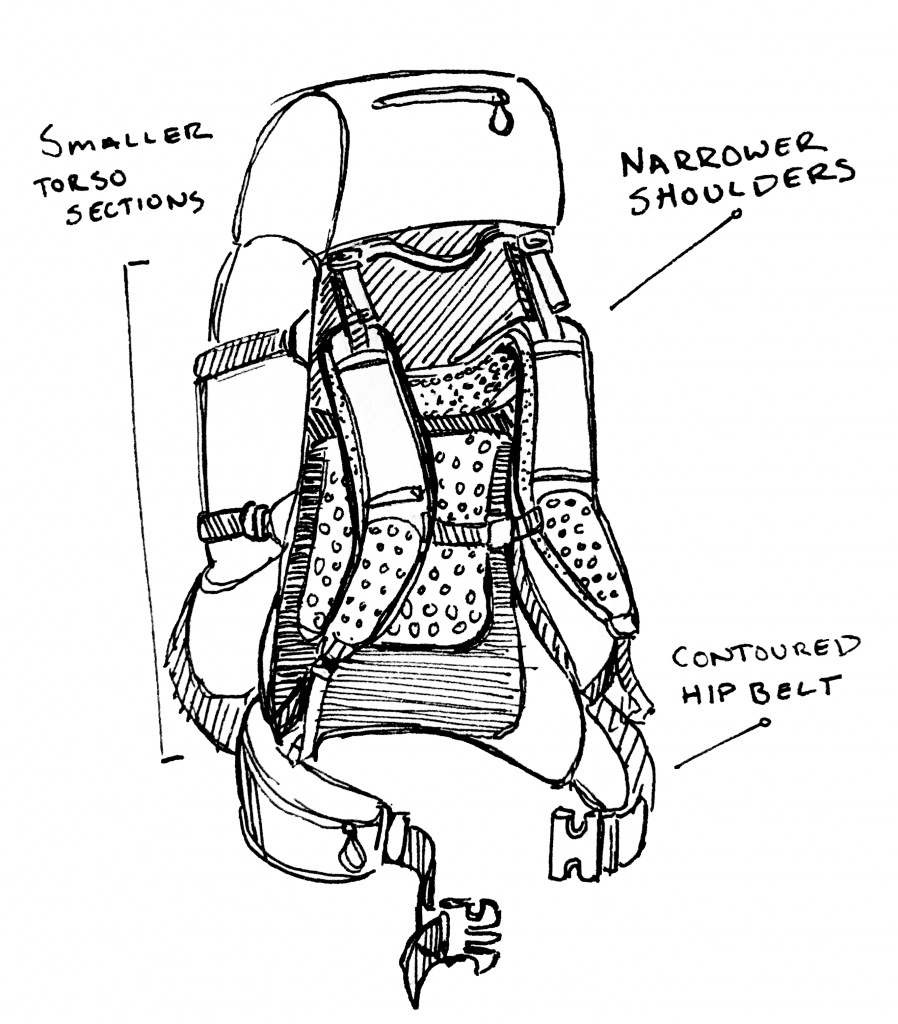
Anthropometry applied to design reveals that women tend to have narrower shoulders, shorter torsos and can carry more weight on their hips than men, because of this woman’s packs tend to have shoulder straps closer together, smaller torso sections and a contoured hip belt that helps transfer weight through the hips to the lower body. The company Osprey is celebrating 25 years of its female-specific packs this year. Some companies are making improvements, but there are still many packs that do not account for women who do not fit the typical body build. If a woman has broader shoulders than the average female, it can be difficult for her to find a pack that also has a contoured waist belt that transfers weight to her lower body. Proper fit addresses functionality.
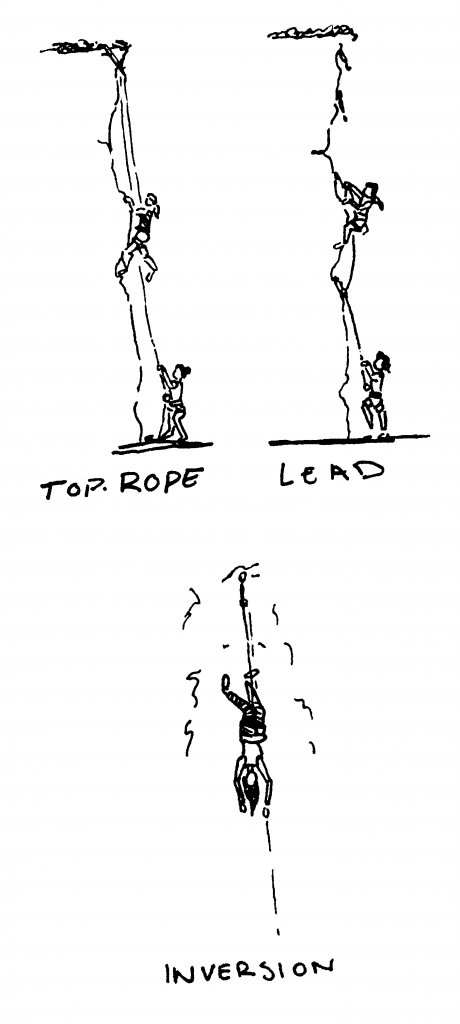
Fit is not just important for comfort. It also plays a vital role in safety. Climbing harnesses are a great place to look at its importance. The modern climbing harness consists of a waistband and two leg loops and protects climbers in the event of a fall. In lead climbing, were climbings are clipping into protection as they ascend the wall, falls can be more dynamic than top-rope climbing, where the rope is pre-placed at the top of the wall. The fit of the harness is critical in these falls as if the harness is loose on the individual wearing it, the harness can come undone, and the climber can fall to the ground. Inversions are another critical time to have a harness that fits correctly. Inversions occur in lead climbing when an individual improperly places their foot and becomes slightly tangled in the rope. If the individual falls during that time, they can be hung upside down until they can right themselves. During this time, if a climbers harness does not fit them properly, they can slip out of the harness and fall to the ground. Harnesses are an example of a product that has benefited from gendering. Women’s harnesses accommodate women with larger hips and allow them to more fully secure the harness at their waist with less excess webbing. An additional example of a product where fit is especially important is hiking boots.
Hiking boots are another critical product that needs to fit well. Based on anthropometry, women’s shoes tend to have slightly wider toe boxes, and narrower heel cups and men’s shoes tend to be wider all around and come in larger sizes than women’s shoes (Koh). The proper fit on hiking boots is vital as it reduces the chance for blisters and falling. If a user does not have a boot that properly holds their foot in place, the skin on foot can start to rub, causing a blister. Which is not only painful but a potential health risk as they can become infected. Loose boots can also be a fall hazard as individuals may have a harder time being confident when placing their feet on difficult terrain. Some individuals combat this with thick socks, but when it is the summer that is not an option.
Consumers purchase products for there fit and function, but the truth is, everyone wants to look great too. Color is another potentially problematic space; while some progress exists in expanding the definition of “female colors,” many individuals find existing options lacking. As soon as one walks into the women’s section of any outdoor retailer, they are confronted with purples, pinks, and teals that every woman is familiar with. The current color pallet continues to reinforce the stereotype of what it means to be a woman and makes expressing one’s individuality more challenging. This color palette is not only present in apparel, but it also occurs in every gendered product.
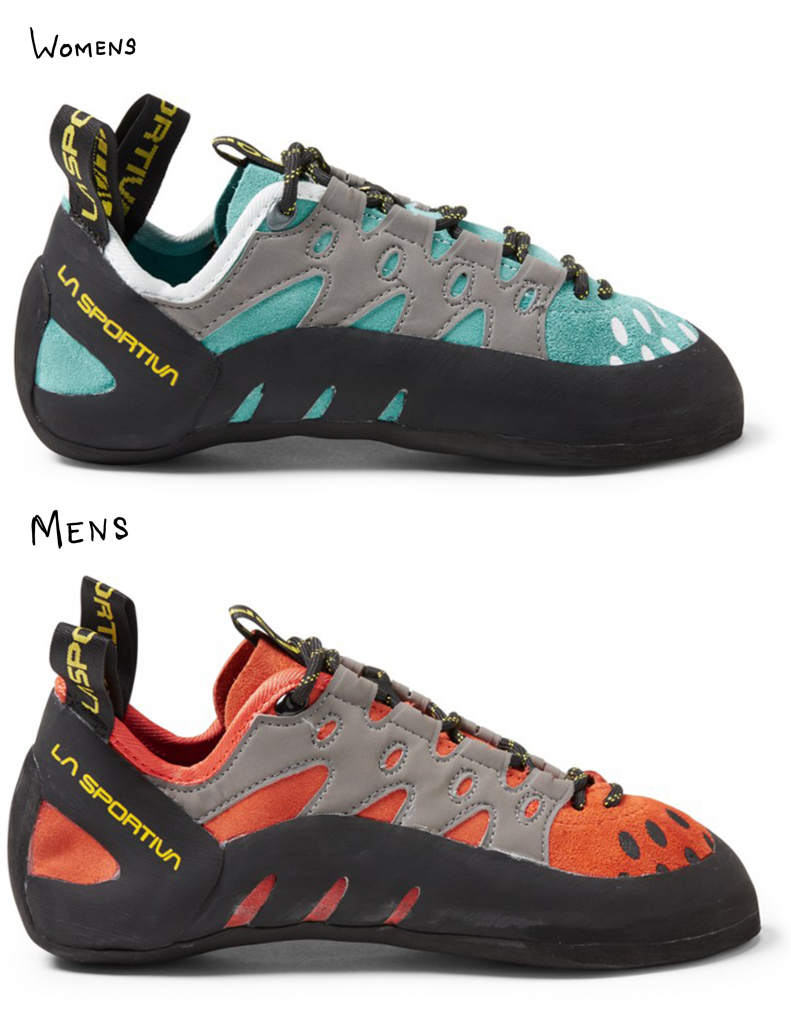
The visible gendering of products can also become problematic as it may keep individuals from selecting the right piece of gear. Some individuals may be uncomfortable with the idea of using the other gender’s product even if it fits them better because they do not feel they are socially allowed. Visible gendering and limited color choices can also be problematic for people who identify with a different gender than what they were assigned at birth. Trans individuals may be more likely to use gear that is suboptimal for their bodies as the outer aesthetic aligns more closely with their gender expression. Thus the equipment is less likely to invalidate their gender identity. It would be beneficial for outfitters to create consistent color palettes for all of their products across the gendered selections.
Everyone should be able to get outside safely and confidently. There are too many benefits physically and mentally for individuals to use their gear as an excuse for not participating. With a focus on understanding and inclusion in the design process, outdoor equipment can become a tool to empower individuals to explore their world.
The implications of improved design relating to gender and right-sizing can have far-reaching effects beyond the outdoor recreation industry. These concepts apply to additional industries such as surgical equipment design, automobile safety, and joint replacements. Refraining from their shrink it and pink strategy of the past and embracing a more inclusive approach will improve product design.
citations:
What Is Rei Doing About Extended Sizing in 2019?
Aer Parris – https://www.rei.com/blog/news/what-is-rei-doing-about-extended-sizing-in-2019
Avery, M. E. (2015, May). The Gendering Of Outdoor Recreation: Women’s Experiences On Their Path To Leadership. Retrieved from https://pdfs.semanticscholar.org/e31f/f91ed316063319108bedc96515d0990552fe.pdf
Koh, S. (n.d.). What Is the Difference Between Women’s and Men’s Running Shoes? Retrieved from https://www.livestrong.com/article/269999-what-is-the-difference-between-womens-mens-running-shoes/
2018 Outdoor Participation Report. (2018). Retrieved from https://cdn.ymaws.com/www.americancanoe.org/resource/resmgr/general-documents/2018_outdoor_recreation_part.pdf

